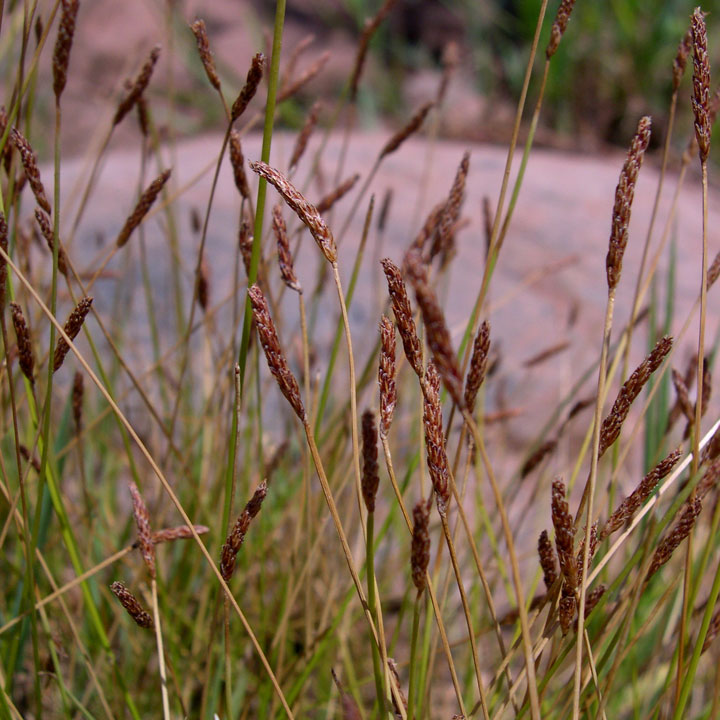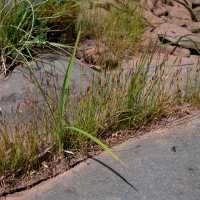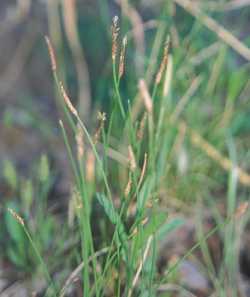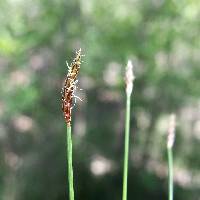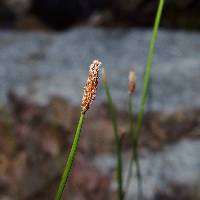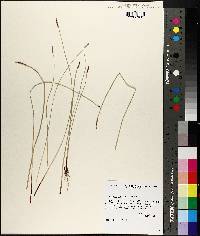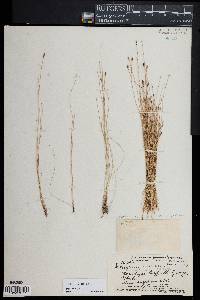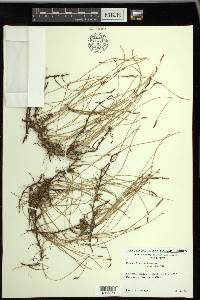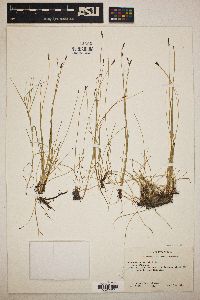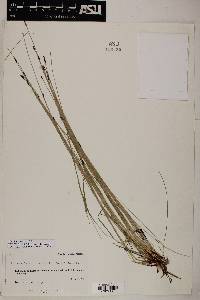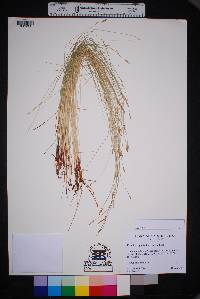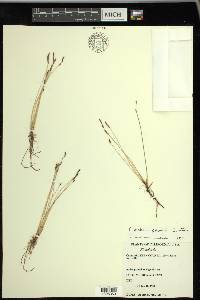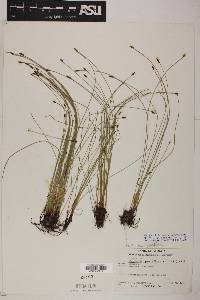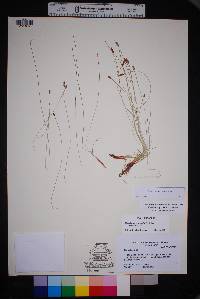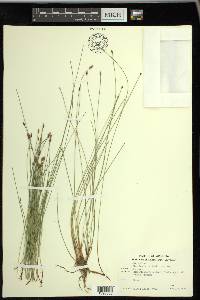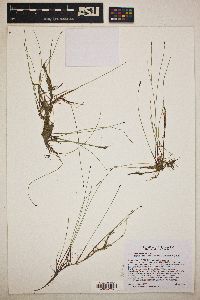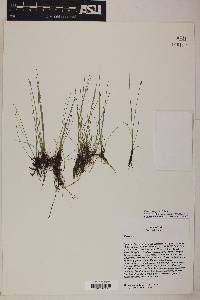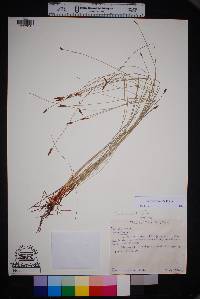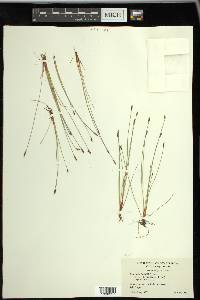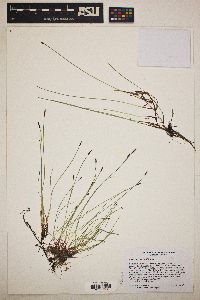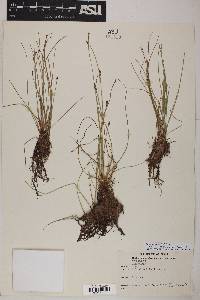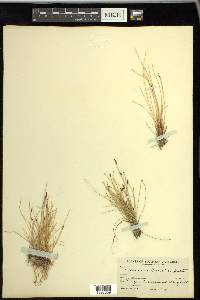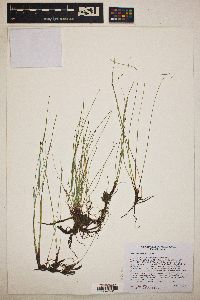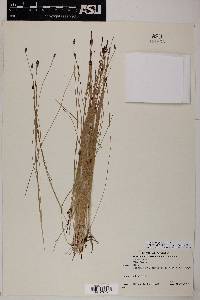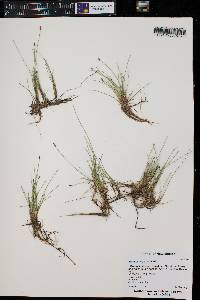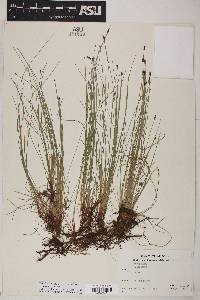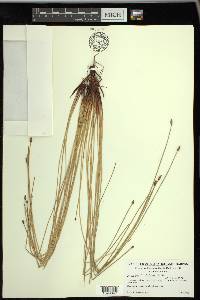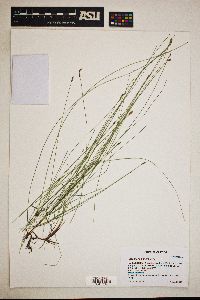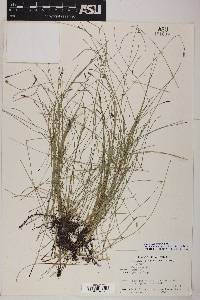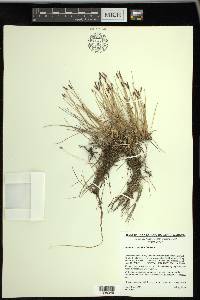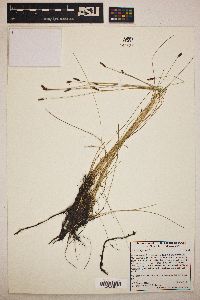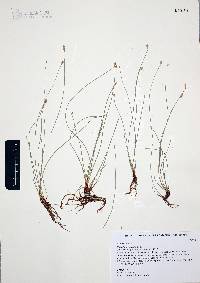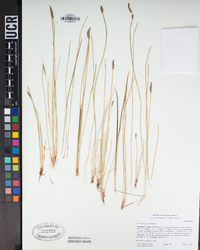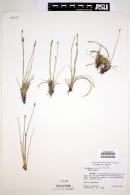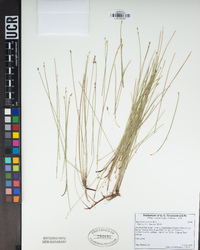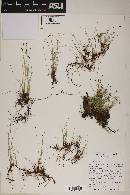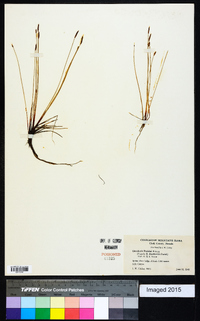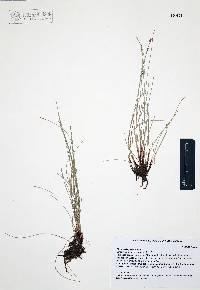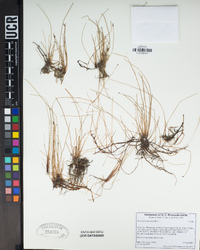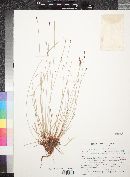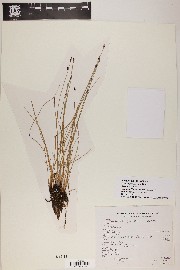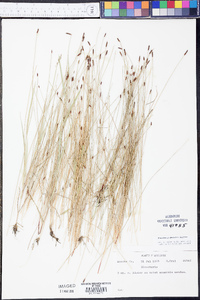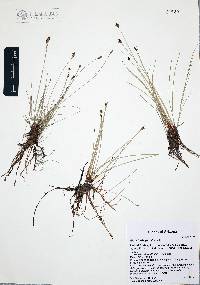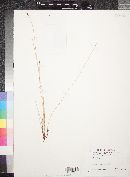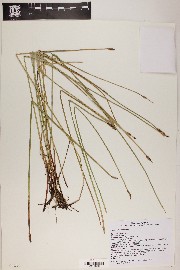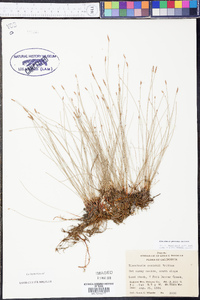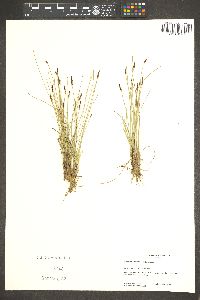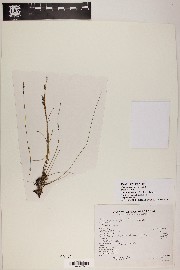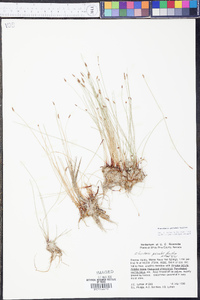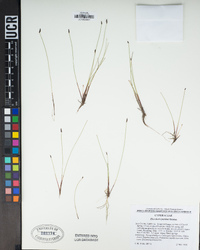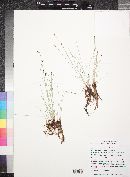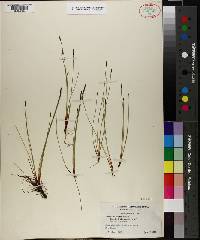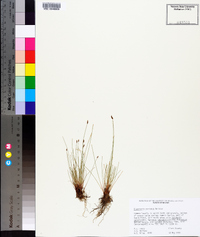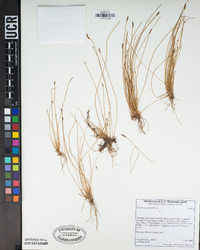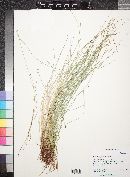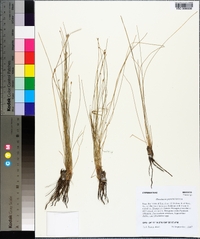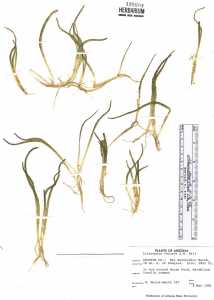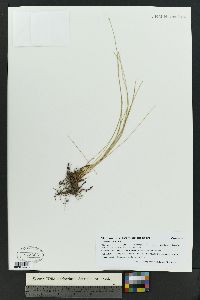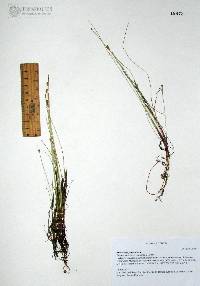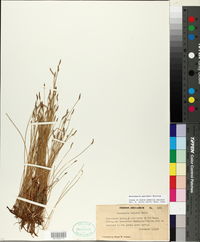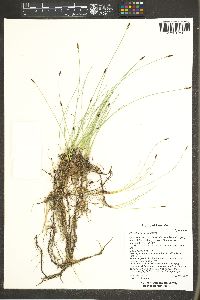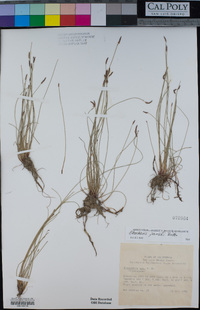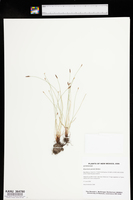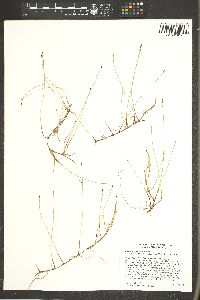Eleocharis parishii
|
|
|
|
Family: Cyperaceae
Parish's Spike-Rush, more...Parish spikerush, Parish's spikerush
[Eleocharis disciformis Parish, moreEleocharis montevidensis var. disciformis (Parish) V. Grant, Eleocharis montevidensis var. parishii (Britt.) V. Grant] |
Plants perennial, mat-forming; rhizomes evident, long, 0.5-1(-2) mm thick, firm, cortex persistent, longer internodes 5-30 mm, scales often fugaceous, 5-10 mm, membranous, not fibrous. Culms terete or cross section elliptic (or rectangular), usually with to 8 blunt ridges when dry, 10-50 cm × 0.2-0.7(-1) mm, soft to firm, spongy. Leaves: distal leaf sheaths persistent, not splitting, mostly proximally dark red, distally red to brown or green, thinly papery to thickly membranous, apex usually red brown, subtruncate to obtuse or subacute, callose, tooth often present on most or all culms, to 1 mm. Spikelets narrowly lanceoloid (to narrowly cylindric), 3-20 × 1.5-2.5 mm, apex acute; proximal scale amplexicaulous, entire; subproximal scale empty or with flower; floral scales appressed or spreading in fruit, 15-40, 3-4 per mm of rachilla, orange brown, midrib regions often greenish, ovate, 2-3 × 1 mm, apex entire, rounded to obtuse in proximal part of spikelet, acute in distal part, carinate, at least in distal part of spikelet. Flowers: perianth bristles 3-7, rarely apparently absent, stramineous to whitish, slender to stout, often unequal, rudimentary to slightly exceeding tubercle; stamens 3; anthers yellow to stramineous, 1.1-2 mm; styles 3-fid, 0.3-0.4 × 0.2-0.3 mm. Achenes falling with scales, yellow-brown or dark brown, ellipsoid or obovoid to obpyriform, compressed-trigonous, angles evident to obscure, rarely prominent, 0.8-1.4 × 0.5-0.7 mm, neck absent to long, smooth or sometimes minutely cancellate at 20-30X. Tubercles whitish, pyramidal, often higher than wide, 0.3-0.4 × 0.25-0.35 mm. 2n = 10. Fruiting spring-fall. Fresh to brackish, wet soil or emergent, often drying lakeshores, ponds, streams, springs; 500-2300 m; Ariz., Calif., Kans., Nev., N.Mex., Oreg., Tex., Utah; Mexico. Eleocharis parishii is very similar to E. montevidensis, with which it sometimes grows. It differs from E. montevidensis mainly in its narrowly lanceoloid to cylindric spikelets and its floral scale apices not recurved or horizontally wrinkled. Some apparent intermediates occur in regions of sympatry. The floral scales of E. montevidensis are more densely placed on the rachilla.
Cronquist et al. 1977, FNA 2002, Kearny and Peebles 1969, Rink and Licher in prep (draft for Flora Neomexicana IV), Allred and Ivey 2012 Common Name: Parish's spikerush Duration: Perennial Nativity: Native Lifeform: Graminoid General: Mat-forming perennial graminoid, 10-50 cm tall, from slender rhizomes; stems slender, terete to elliptic, mostly 6-8 ribbed, forming colonies. Vegetative: Leaves reduced to sheaths only, without any blades; leaf sheaths persistent, dark red near the bottom, red to brown or green above, usually with a red-brown apex, thinly papery to thickly membranous, usually terminating in a 1 mm tooth. Inflorescence: A single spikelet at the tip of each stem; spikelet linear-lanceolate, slender and elongate, 7-15 mm long and 3-7 times as long as wide, 20-40 flowered; scales subtending each flower are pale brown to purplish-reddish-brown, 3 mm long, with green midvein and acute pale, hyaline tip; lowest scale in each spikelet is shorter, broader, firmer and commonly sterile; each flower has a perianth of 6-7 white or brownish bristles that are retrorsely barbellate; 3 stigmas per flower; achene yellowish to dark brown, 3-sided, about 1 mm long, with a pyramid-shaped tubercle attached, this distinctly constricted at the base. Ecology: Found in moist soils, from 4,000-9,000 ft (1219-2743 m); flowers April-September. Distribution: OR south to CA; east to TX; south to s MEX. Notes: This graceful, delicate rhizomatous perennial is distinguished from other Eleocharis spp. by these traits: 3-cleft styles (i.e. 3 stigmas per flower); stems which are round to slightly compressed in cross section; each achene has a tubercle attached to the top, which is distinct from the achene and not confluent with it; each flower has a perianth of several white to tan barbellate bristles; and most of the leaf sheaths have a distinct, 1 mm long tooth at the top. Some of these characters are difficult to see with a hand lens in the field; it may be advisable to make a good collection for ID in the herbarium. Ethnobotany: Unknown Etymology: Eleocharis translates to graceful marsh plant, from the Greek words heleo, marsh or meadow, and charis, grace or beauty; parishii is named for the brothers Samuel Bonsall Parish (1838-1928) and William Fletcher Parish (1840-1918), botanists who worked in southern California. Synonyms: Eleocharis disciformis, Eleocharis montevidensis var. disciformis, Eleocharis montevidensis var. parishii Editor: SBuckley 2010, FSCoburn 2015, AHazelton 2017 |

